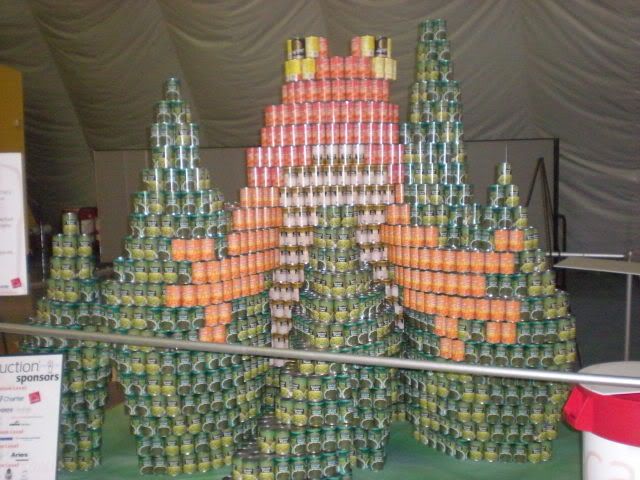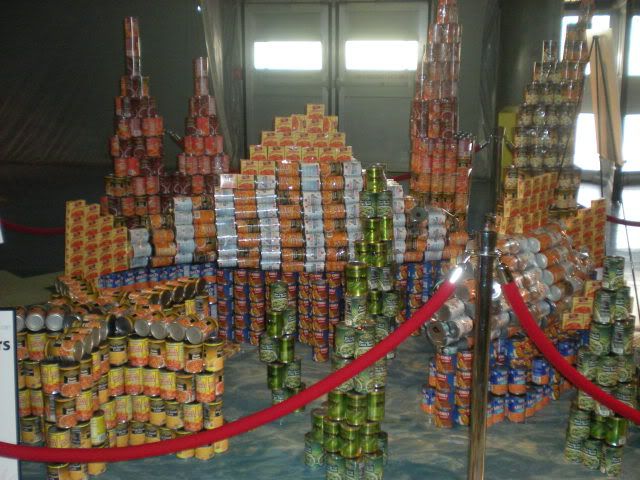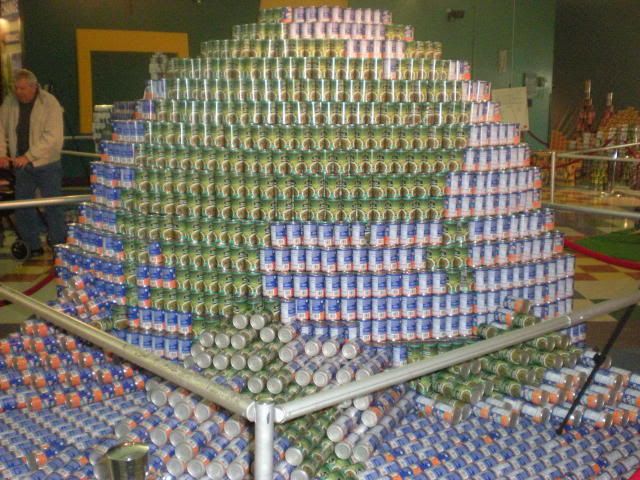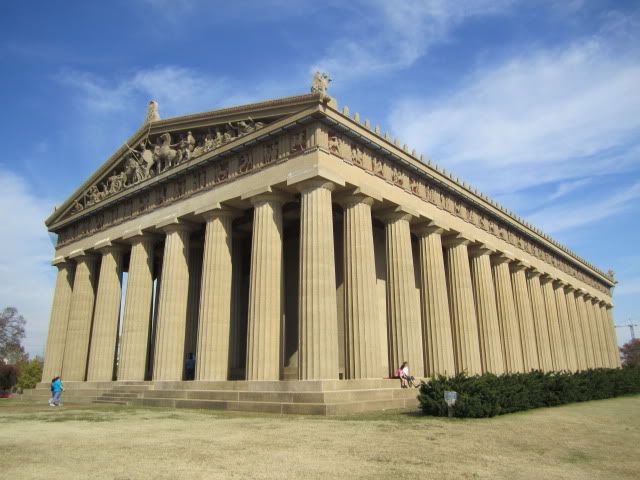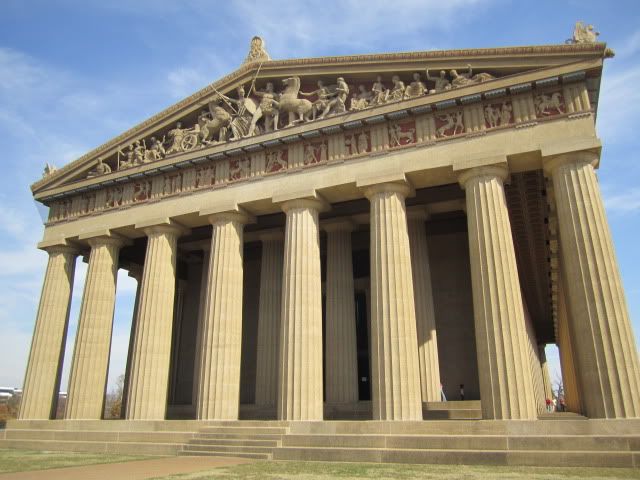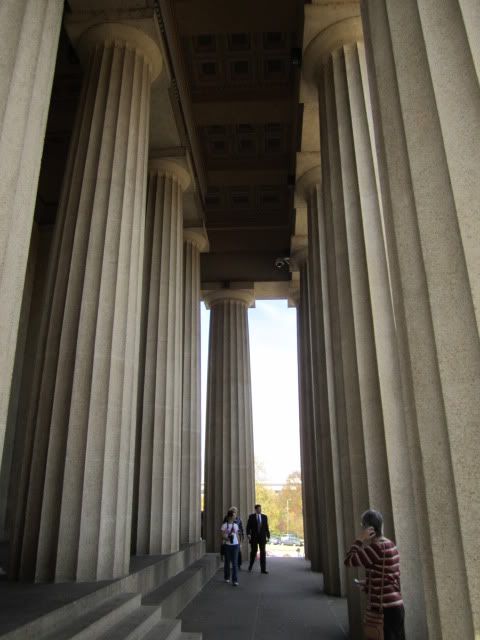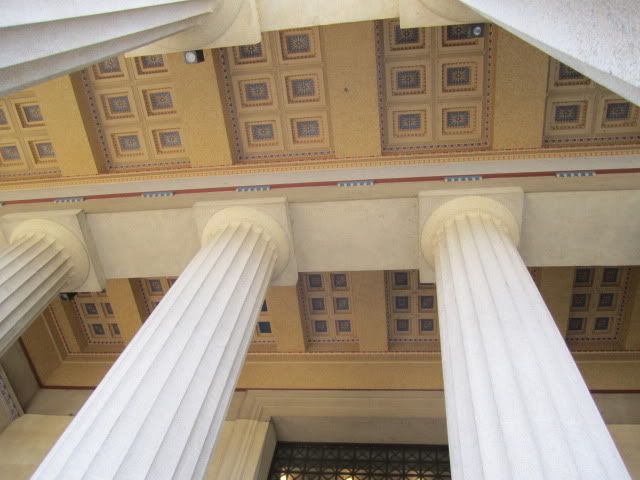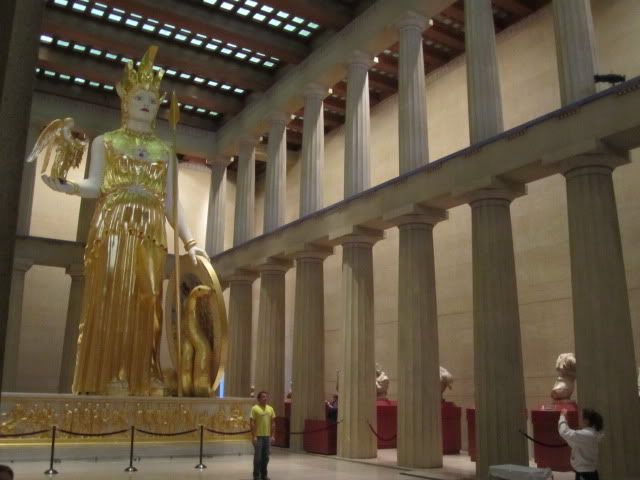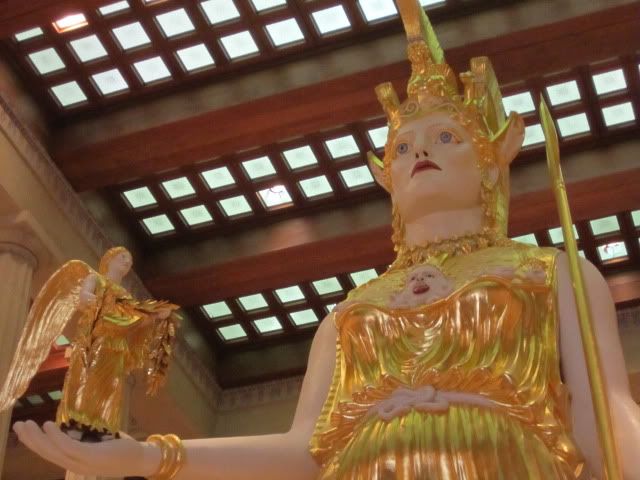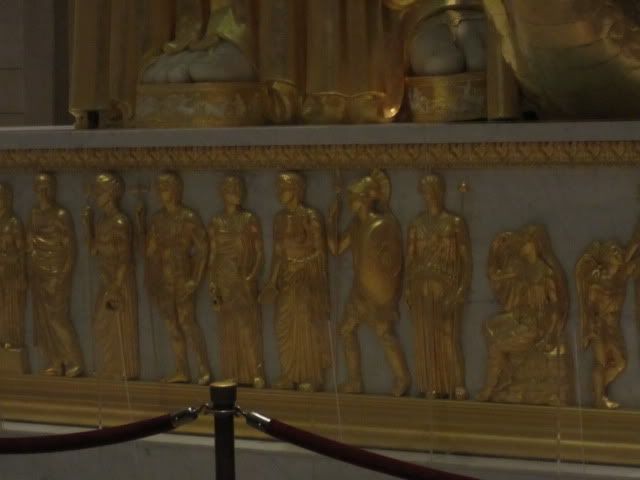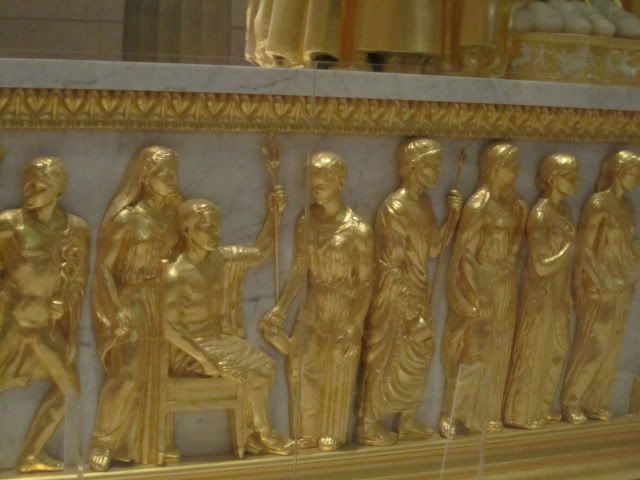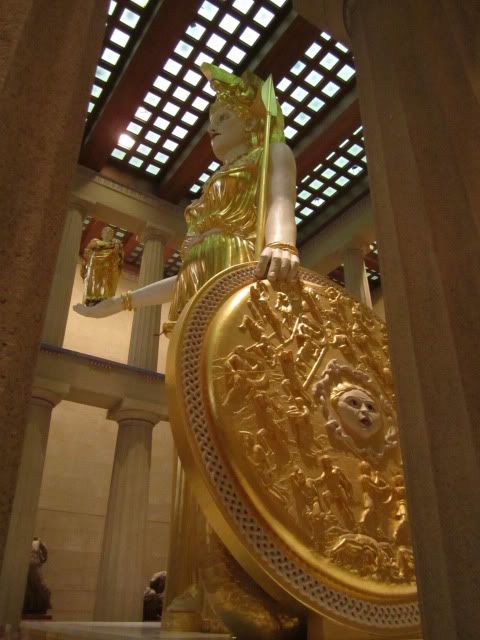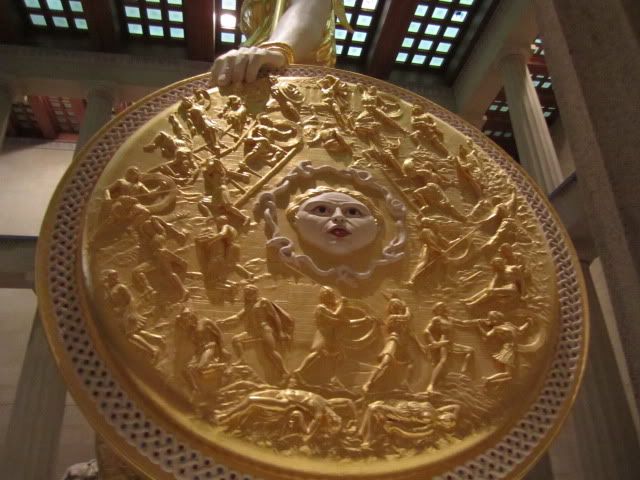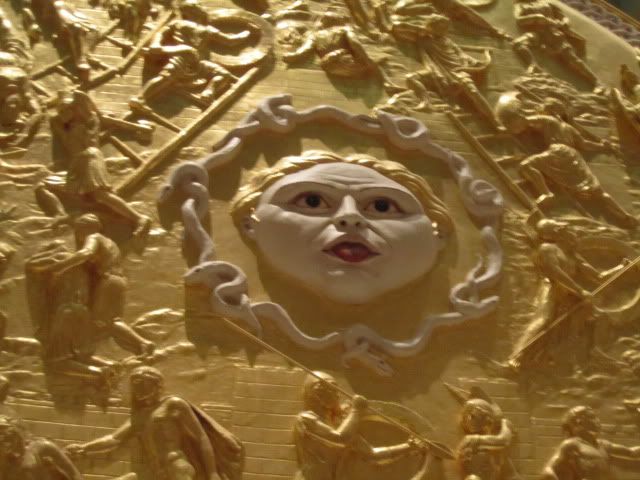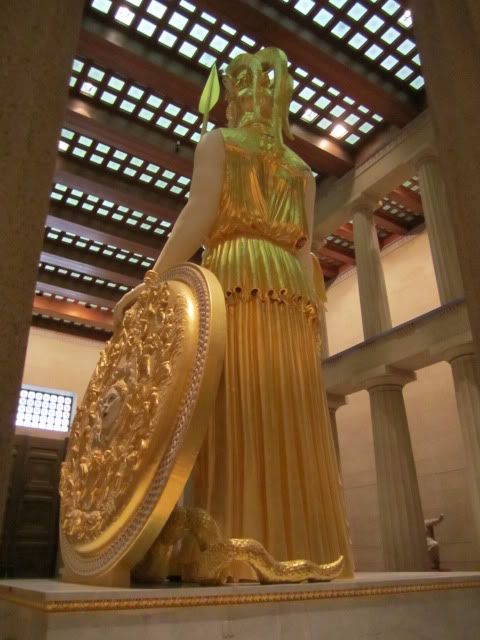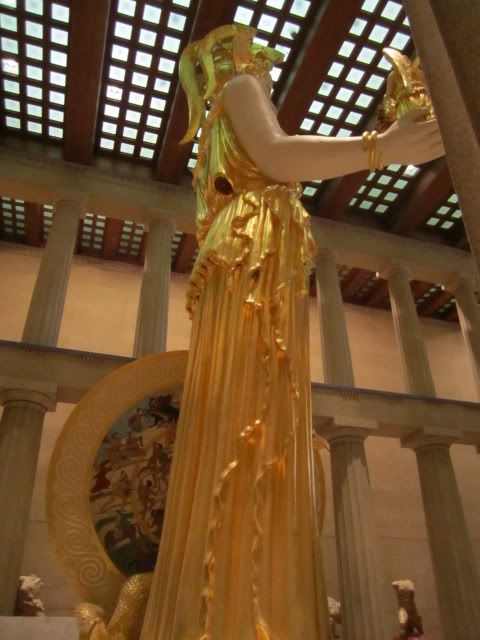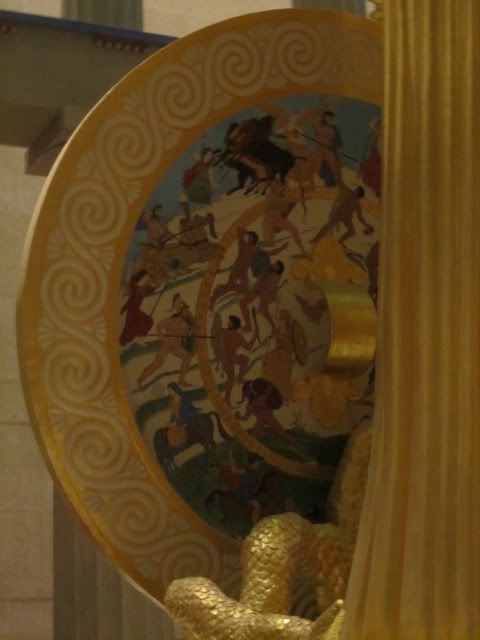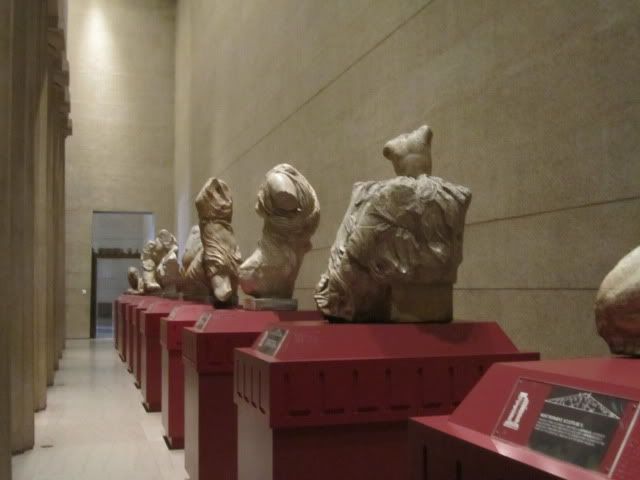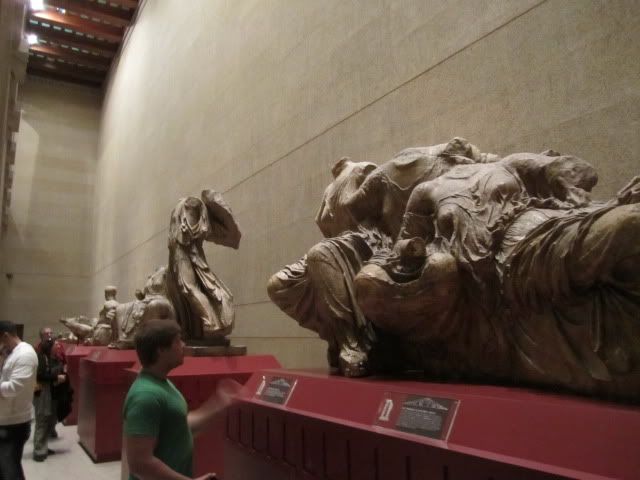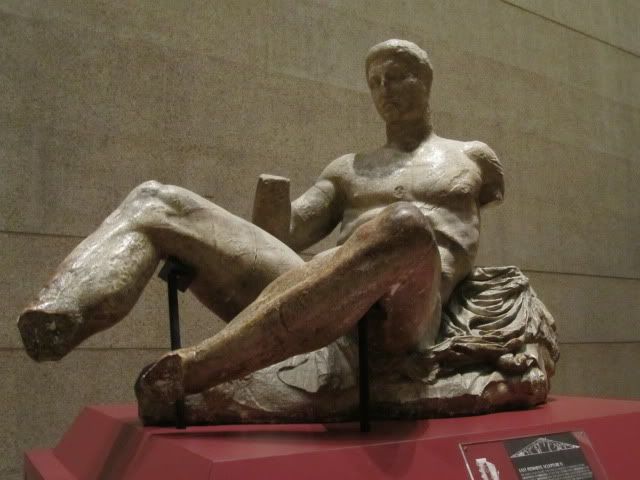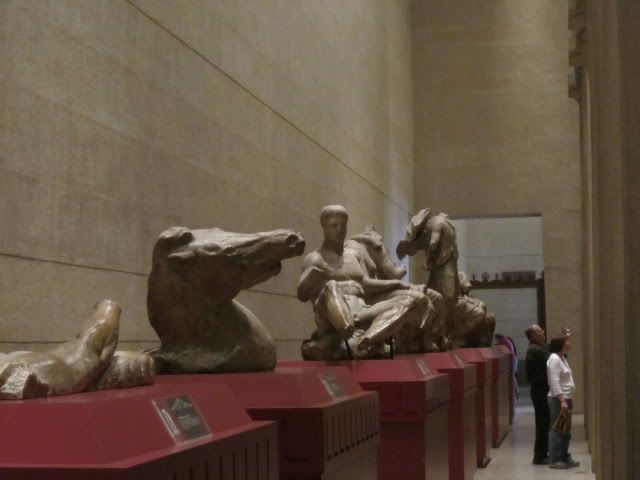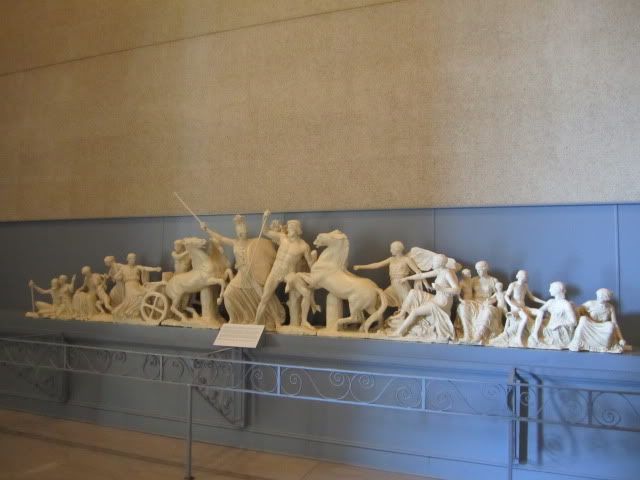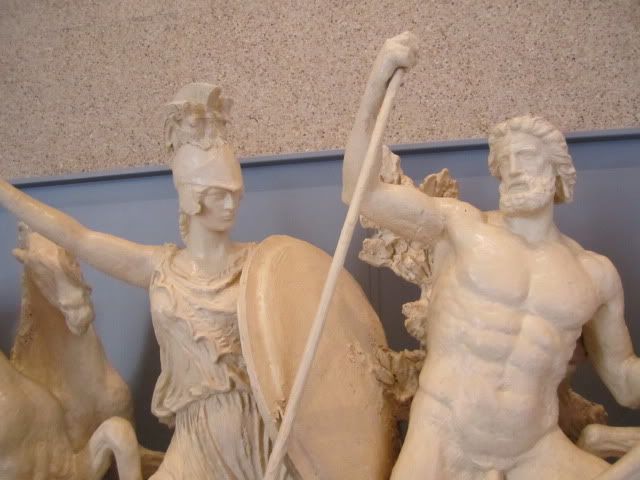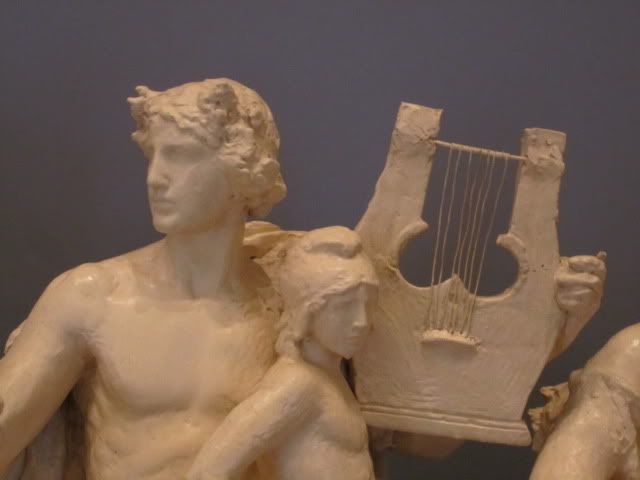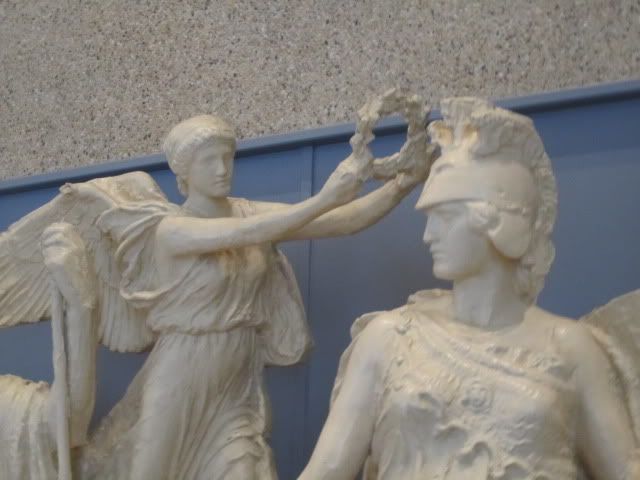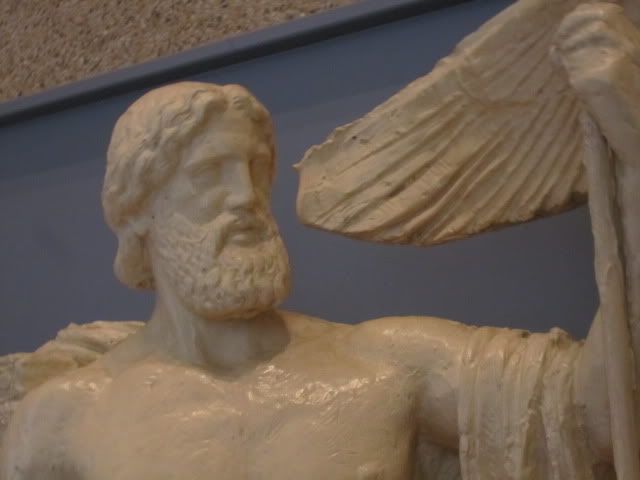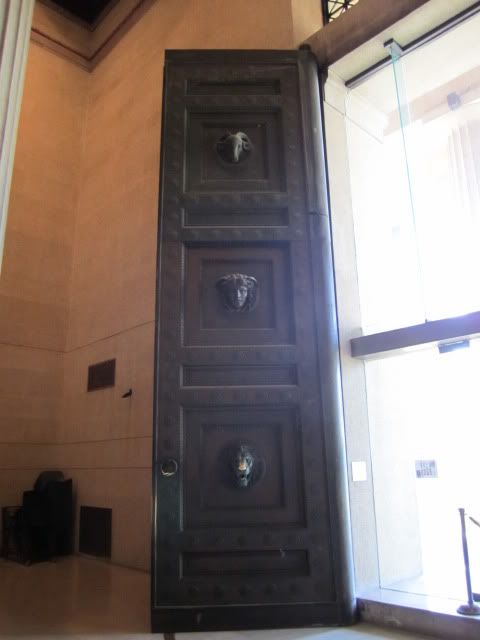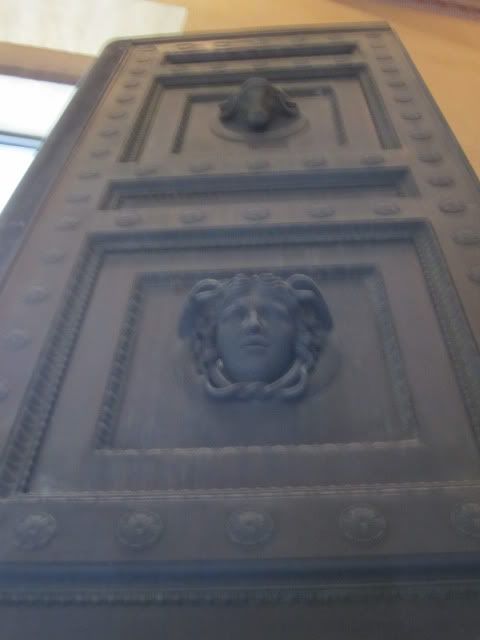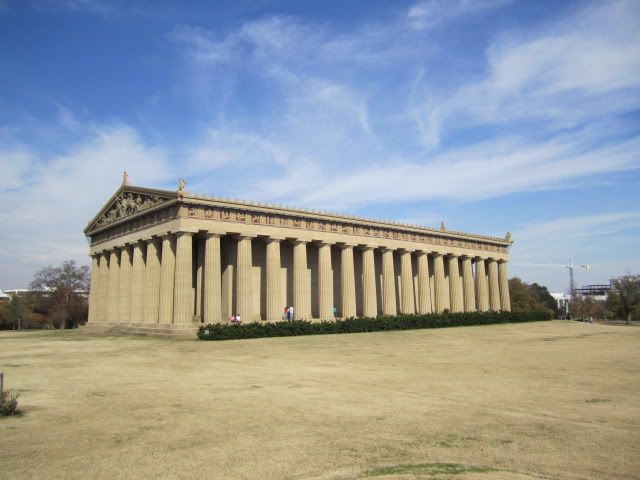I know, I am overdue for some new content. I've been a little obsessive about finishing my first
Doctor Who scarf! There was still time for adventures, just no time to write about them.

So Sunday was a GORGEOUS day for a Busch Stadium tour. In the off season, they only do tours at 11am and 1pm, but due to the warm weather, Opening Day on the horizon, and the fact that the
Groupon was due to expire on 3/31, they had to add nine more tours on Sunday, and said they added eight the day before! Even the regular season tours only happen four times a day.

My sister is a huge Cardinals fan, but I had never been in the new stadium, which was completed in 2006. Even though I'm not much of a baseball fan, I thought this tour was really interesting. You get to go in a lot of areas that are normally off limits, or prohibitively expensive, and our new stadium, with its retro design, just has a really friendly feel to it. I'm definitely going to try to make it to a game this season.

In the picture above, below the Budweiser screen, are all the numbers retired by the Cardinals. Some trivia, especially for people like me who love trivia but not sports: The numbers are 1, 2, 6, 9, 14, 17, 20, 42, 45, and 85.
You can read about them in detail here, but my favorite highlights are that #42 was Jackie Robinson's number and has to be retired by every team. However, Bruce Sutter also wore this number before it was retired in honor of Jackie Robinson, so the Cardinals retired it twice. #85 was never worn by a player, but is actually an honorary number given to August Busch, Jr on his 85th birthday.

There is also a microphone symbol on the board in honor of Jack Buck, the beloved Cardinals announcer who died in 2002. Besides this statue, he also has a stretch of I-64 named after him, and a star on the St Louis Walk of Fame. When he died, fans were leaving flowers at his statue within hours, even though it was the middle of the night. Come to think of it, I really stopped paying attention to baseball after he died. He really was the voice of summer.

Number 6 is another St Louis favorite, Stan "The Man" Musial, the first player in Cardinals history to have his number retired. I'm not going to bore myself with statistics, other than to say he broke a whole lot of records. Stan was just awarded the Presidential Medal of Freedom, and the stadium also has a seating area called the Stan Musial Bridge. Here's the view from the bridge:

A couple other fun tidbits: See the section of seats in the picture below that are over a big door? That's the only access point for vehicles to get into the stadium. It's not big enough for a fire truck, or even the Clydesdales beer wagon, so when vehicles need to come in, that whole section raises up on hydraulics. It takes 7-8 minutes for them to go up (and no, you can't stay in your seat when they do it).

Outside the stadium is a white line that crosses the sidewalk. This is the exact location of the right field foul line of the old Busch Stadium.

You can see on the plaque how the stadiums overlapped. It was quite tricky to build a new stadium while the old one was still in use, and then demolish the old one and complete the new one before the next season started. Not only did the Cardinals do it, they won the World Series the first year in the new stadium! I took pictures from the top of the Arch when this was going on, and if I can find them, I'll post them on the CC&G Facebook page later.

Now for a couple of those expensive areas that you might not get to see otherwise. The Cardinals are using dynamic pricing this year, which means that prices change based on day of the week and opponent, so I can't really get into cost here. They are premium, "all inclusive" areas, and you can look up pricing
on the Cardinal's website.

For us little people, one of the moderately affordable options: The Champion Club. Air conditioned bar/buffet area, private entrance and restrooms, two bars, 30 televisions, and covered seats outside. PLUS they have one of the 2006 World Series trophies behind the bar (I didn't get a picture, but you can see Kirk and Kate posing with it
here).

A step up from the regular suites is the Owners Suite, also known as the Rebirds Roost, which you can rent when the owners aren't using it. Also includes food and beverage, couches indoors, and covered seats outdoors. Here are Susan and Patrick at the bar:


The Cardinals Club is the fanciest one of all, with a swanky restaurant and bar and "green seats" (the rows behind home plate). In this case, you have to actually buy a pair of seats to get access to the Cardinals Club, and the price I just saw on the
Ballpark Founders Marketplace was $36,000 for a pair.

From the Cardinals Club we walked through the back halls and right out onto the field! Well, not literally. As they stress over and over (and over), you cannot ever, EVER touch the grass. It's Kentucky Bluegrass from Colorado, by the way, and the sprinkler system actually pumps chilled water to fool the grass into thinking it is still in Colorado.

We also got to go into the dugout, but not the locker rooms. The only times you can tour the locker rooms are during the Cardinals Winter Warmup in January. You don't have to attend the Winter Warmup, just take the stadium tour on those days.

So there you have it. If you have baseball in your city, you probably have a stadium tour, and it's a fun little activity for a nice Sunday afternoon. Tour prices for Busch Stadium are $10 and you should
check the website for times and blackout dates.


